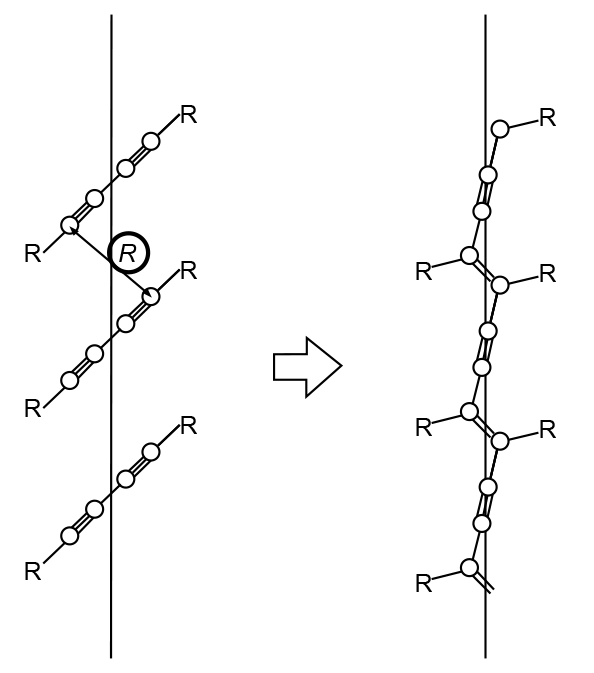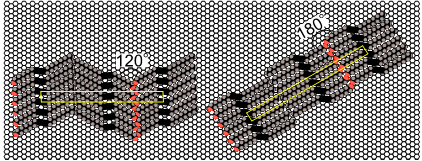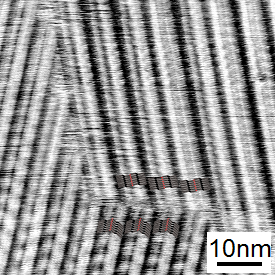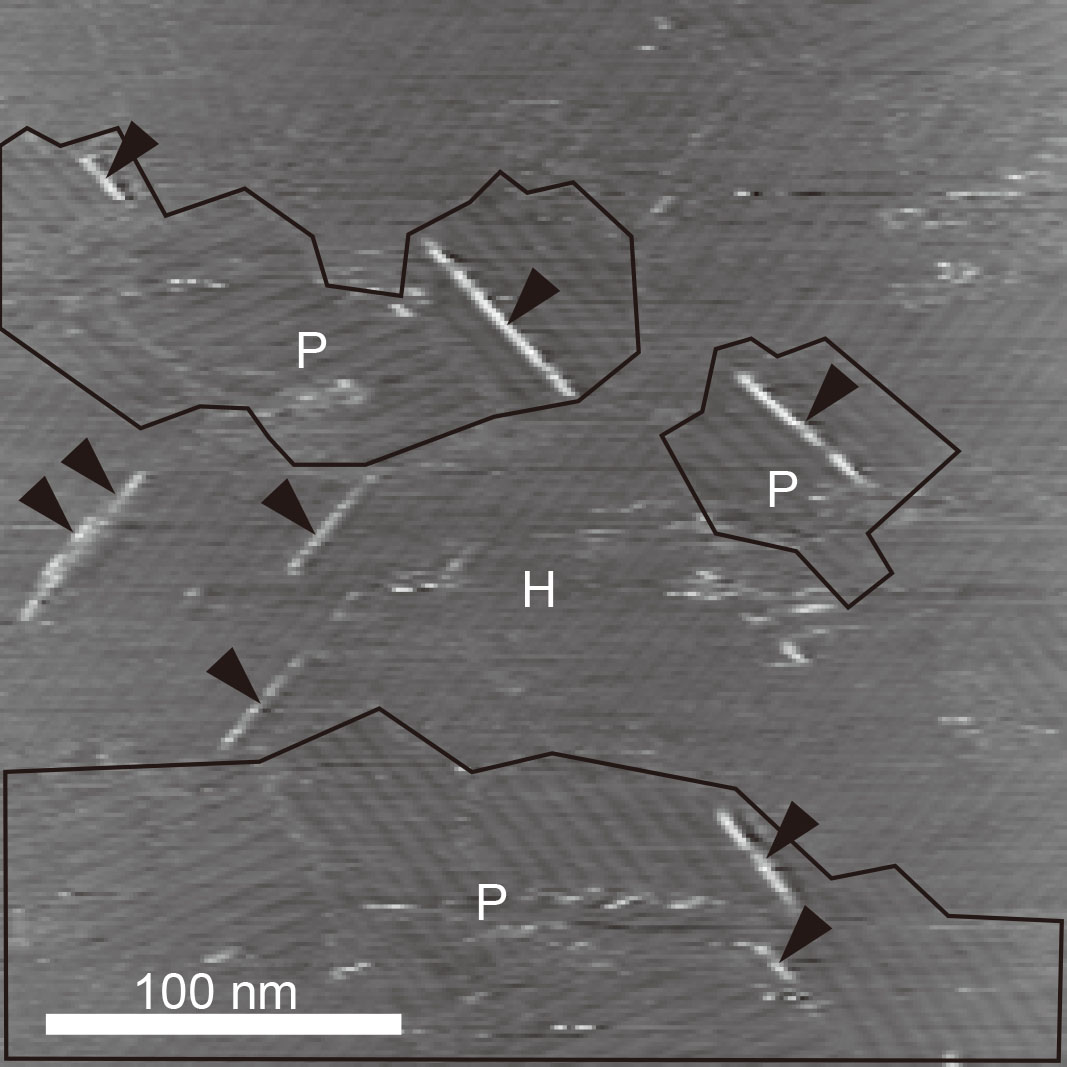
Fig. 1. Schematic representation of the packing of diacetylene monomers and the topochemical polymerization (R: distance between reacting atoms)
The photo-induced chain polymerization of the diacetylene (DA) compound 10,12-pentacosadiyn-1-ol (PCDYol) in the two dimensional (2D) crystal phase (ordered molecular layers) adsorbed on highly oriented pyrolitic graphite (HOPG) was examined by using scanning tunneling microscopy (STM). It was found that the reactivity depends on the polymorphic forms, i.e., monomer arrangements. Two polymorphic forms, "herringbone" and "parallel" molecular arrangements, of molecular layers from the PCDYol on an HOPG substrate were transferred from an aqueous surface. The chain polymerization of the PCDYol molecular layer was initiated under the ultraviolet (UV) irradiation and the generated polymers were observed by STM in air. The reactivity in the herringbone arrangement was thirtieth part of that in the parallel arrangement. This can be explained by the fact that the distance R between possibly reacting acetylenic carbon atoms of the herringbone (0.58 nm) was larger than the parallel (0.39 nm). However, the polydiacetylenes were formed from the herringbone arrangement (R = 0.58 nm) contrary to the geometric criterion for the polymerization established in the 3D crystal (high reactivity is only observed if the separation R is less than 0.4 nm in the 3D crystal phase). This suggests that the criterion for the polymerization in 2D crystal phase differs from that in 3D phase.

Fig. 1. Schematic representation of the packing of diacetylene monomers and the topochemical polymerization (R: distance between reacting atoms)

Fig. 2. Molecular structure of PCDYol.

Fig. 3. Models of the molecular arrangements of herringbone (left) and parallel (right) structures on the HOPG surface.

Fig. 4. STM image of the adjacent domains of the herringbone and parallel structures physisorbed on graphite. The schematic overlays show models of the molecular arrangements.

Fig. 5. STM image of the polydiacetylenes arising as bright lines (suggested by black arrowheads) obtained after the UV irradiation. The polymers are generated in domains of both parallel (P) and herringbone (H) arrangements.